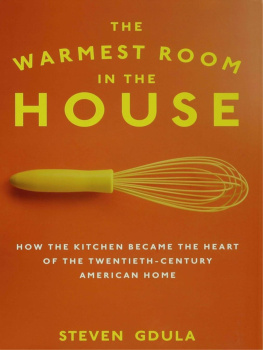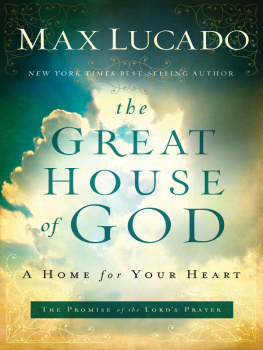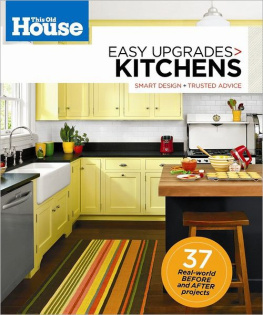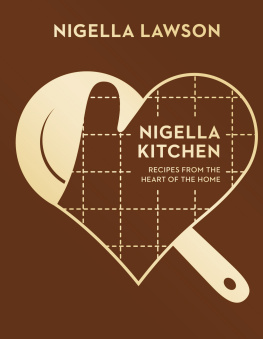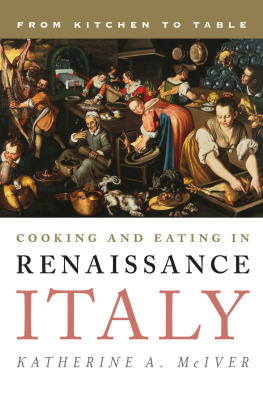THE WARMEST ROOM
IN THE HOUSE
THE WARMEST ROOM
IN THE HOUSE
How the Kitchen Became
the Heart of the Twentieth-Century
American Home
STEVEN GDULA
B L O O M S B U R Y
Copyright 2008 by Steven Gdula
All rights reserved. No part of this book may be used or reproduced in any manner whatsoever without written permission from the publisher except in the case of brief quotations embodied in critical articles or reviews. For information address Bloomsbury USA, 175 Fifth Avenue, New York, NY 10010.
Published by Bloomsbury USA, New York
Distributed to the trade by Macmillan
All papers used by Bloomsbury USA are natural, recyclable products made from wood grown in well-managed forests. The manufacturing processes conform to the environmental regulations of the country of origin.
LIBRARY OF CONGRESS CATALOGING-IN-PUBLICATION DATA Gdula, Steven.
The warmest room in the house : how the kitchen became the heart of the twentieth-century American home / Steven Gdula.1st U.S. ed.
p. cm.
Includes bibliographical references and index.
eISBN: 978-1-59691-787-3
1. KitchensUnited StatesHistory. 2. CookeryUnited StatesHistory.
3. United StatesSocial life and customs. I. Title.
TX653.G38 2007
643' .30973dc22
2007009768
First U.S. Edition 2008
3 5 7 9 10 8 6 4 2
Typeset by Westchester Book Group
Printed in the United States of America by Quebecor World Fairfield
For my parents Helen and Peter Gdula,
for Mar go, andforLon
CONTENTS
I n the house I grew up in, both of my parents cooked. As a schoolteacher, my father ended his workday and walked through the front door almost two full hours earlier than my mother. On most days, cooking duties were assumed by my dad. By the time my mom came home, the preparation of the meal was usually complete. But that didn't stop her from lifting the lid of whatever sat on the stove, plunging in a spoon, and giving the contents a quick stir.
"How much garlic did you put in here?"
"Why?" my father would ask, somewhat defensively.
"I'm just asking, that's all," my mother would answer. Her comments were always more perfunctory than critical. They were about maintaining her connection to the kitchen rather than trying to wrangle control.
When my dad would step to the counter to correct what he perceived as his culinary error, my mom would toss her head in the direction of the kitchen clock and say, "It's fine, it's fine, we have to eat, look what time it is already!"
And with that our family of six would rush to the dining room and sit down, each of us gabbing about our day between gulps of food.
This mealtime scenario was a common one, enacted in our house on most workdays through the 1960s and '70s as my parents did their best to give us what they felt was the most important requirement of the family dinnerthe time we spent together at the table. Often the food itself was secondary, though both my parents were very good cooks. Despite the push and pull of their counterside exchanges, their kitchen operations were a tag-team effort. They had to be. With financial hardships making it necessary for both of them to work outside the home, they traded roles inside the house. Mom took the helm on weekends and holidays while Dad kept us on course the rest of the time. This did not seem unusual to me. Nearly all my neighborhood friends had working parents who shared cooking responsibilities, though I admit I always thought my dad was more skilled than theirs. This was, after all, the guy who made chive dressing with fresh produce from his garden, who gutted and fried the trout he reeled in from local streams, and who stir-fried chicken in the wok he received for Father's Day.
Regardless of how I felt about the cooking prowess of the other fathers on our block, I respected other families' mealtimes. In my hometown, dinnertime was family time. Period.
Despite my view of my parents as better-than-average cooks, I never thought there was anything that made our kitchen all that different from those of my friends. Until, that is, a lesson on colonial spice trade in my fourth-grade history class made me wonder if maybe the similarities were outnumbered by the differences.
When we were asked to name some of the spices used in our kitchens I raised my hand knowingly. "Paprika," I replied, pronouncing it as I'd always heard at home. I was always eager to participate, but this time my contribution to the class made my teacher step closer, her head cocked inquisitively. I thought for one second I'd stumped her, or at least impressed her, having chosen something more exotic than salt and pepper, those obvious tabletop twins.
"Paprika," I said again, this time a little self-satisfied. My classmates giggled. Obviously we were all aware of something our teacher wasn't as she leaned in farther, her expression now more puzzled than before.
I was about to repeat myself when she finally registered recognition and, with it, a bit of relief. "Oh! Paprika, yes," she said with a nod.
The word she uttered sounded strange to me.
"Pap-REEK-a?"I said it as she did, drawing out the short a so that the first syllable rhymed with cap. Pap-REEK-a. I said it aloud again. The second syllable rose and fell quickly, as if the person saying it were suddenly startled, and I noticed I lifted my eyebrows for added emphasis as I said it again.
Something that was so familiar now sounded, and felt, very foreign to me.
"That's the English pronunciation," my mom explained at the dinner table that evening.
"But we speak English," I countered. "And we don't say pap-REEK-a.
We say PUHP-rree-kuh." I accented the first syllable and rolled my r. Said this way, the word was musical and playful, not harsh and clipped.
"That's because we pronounce it the Hungarian way," she said.
If our way of saying paprika was different, I wondered if the way we used the spice was also different. I knew how the output of our kitchen was unique, but that day's history lesson made me begin to think about why.
There's history in every kitchen, and my family's pronunciation of paprika was part of ours. My father was Slovak, my mother Hungarian, and paprika was a staple of the kitchens they were raised in, as it was now in the kitchen they shared. Cans of the powder were always within easy reach of the stove, as my parents used the spice in almost every recipe they made. My dad dusted it over pan-fried potatoes, and the spice encrusted the humble spuds in reddish brown. They were always served perfectly crispy on the outside, warm and steamy on the inside. My mom blended paprika with sour cream in her Chicken Paprikash to impart a mild, sweet richness to the dish's sauce. Served over dumplingscalled nokedli in our housethere was no food more comforting than this.
I knew the aromas of these dishes wafted out of our kitchen and made their way through the neighborhood in the warmer months when windows and screen doors were open, just as the distinctive smell of oregano would drift across our yard from our next-door neighbor's house when Mrs. Bon-fanti's pasta sauce simmered on her stove.
The kitchens in our small Pennsylvania town represented the European ancestry of the people who had moved to work in the region's coal mines in the early twentieth century. With these immigrants came their recipes. Sometimes the foods from their ancestral kitchens retained their ethnic purity, but often those recipes were adapted out of necessity, dictated by the ingredients at hand. Improvisation didn't always give way to inspiration, thoughmy Slovak grandmother, having seen the spaghetti sauce made by her Italian neighbors, once served my father and his siblings noodles covered with ketchup, circa 1939.
Next page
